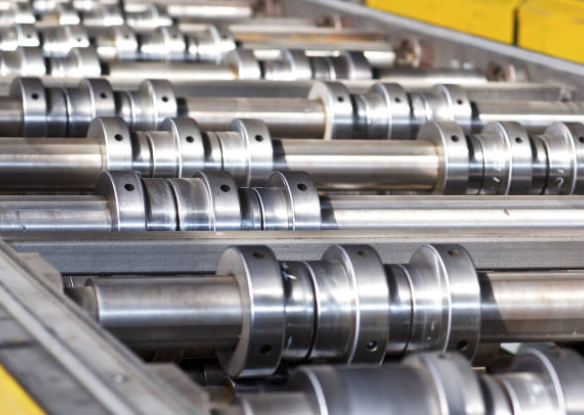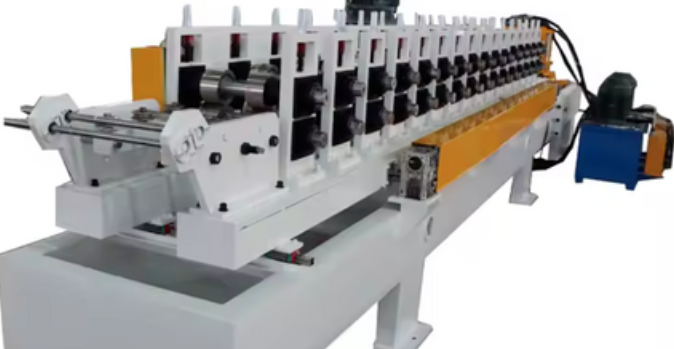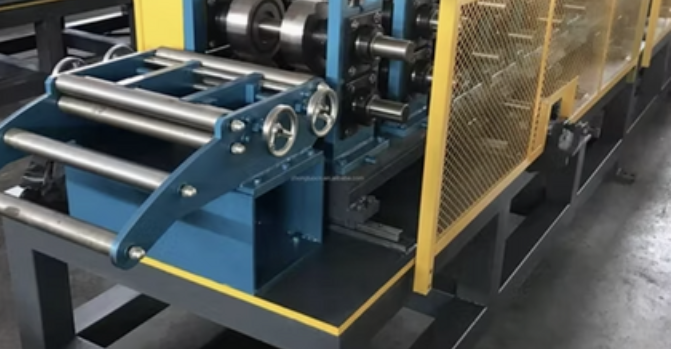Here’s a general guide on how to operate roll forming machinery properly:
1. Prepare the Machine and Workspace
- Inspect the Machine: Before starting, inspect the roll forming machine for any wear, damage, or loose parts. Check the tooling alignment and make sure all safety guards are in place.
- Set Up the Work Area: Ensure the workspace around the machine is clean and clear of any debris or obstacles to avoid accidents or equipment damage.
2. Set the Material and Parameters
- Select the Correct Material: Ensure the material (steel, aluminum, copper, etc.) is compatible with the machine’s specifications.
- Set the Material Width and Thickness: Adjust the machine settings to accommodate the specific material width, thickness, and profile required for the job.
- Adjust Rollers and Guides: Align and adjust the rollers and guides to ensure proper forming and prevent material misalignment or buckling.
- Feed Material into the Machine: Feed the material into the uncoiler (if used), making sure it aligns with the first set of rollers to avoid jams or damage.
3. Conduct a Test Run
- Run a Test Piece: Before starting full production, run a test piece to verify that the machine is producing the correct profile and dimensions.
- Check Product Accuracy: Inspect the test piece for defects, dimensions, and alignment. Adjust roller pressure or alignment if necessary.
4. Operate the Machine Safely
- Follow Safety Protocols: Wear appropriate safety gear, such as gloves, goggles, and steel-toed boots. Never reach into the machine while it is operating.
- Monitor the Process: Continuously monitor the material as it passes through the rollers to catch any potential issues (misalignment, jamming, etc.) early on.
- Use the Emergency Stop: Know the location of the emergency stop button and use it if anything goes wrong.
5. Maintain the Machine
- Lubrication: Regularly lubricate the machine's moving parts to reduce wear and tear.
- Clean the Rollers: Keep the rollers clean to prevent material buildup, which can affect the quality of the final product.
- Inspect and Replace Worn Parts: Frequently check the rollers, guides, and bearings for wear. Replace any damaged or worn components promptly to maintain precision.
6. Shutdown Procedures
- Turn Off the Machine: When finished, turn off the roll forming machine and allow it to come to a complete stop before performing any maintenance or cleaning.
- Secure the Work Area: Make sure all materials are cleared away, and the area is secure before leaving the machine.
7. Training and Documentation
- Operator Training: Ensure that operators are properly trained on the machine's functions, safety features, and maintenance procedures.
- Keep Documentation Handy: Have the machine's manual available for reference on specific settings, maintenance schedules, and troubleshooting tips.
Tips for Long-Term Efficiency:
- Regular Maintenance: Follow a regular maintenance schedule to keep the machine running smoothly.
- Use High-Quality Material: Low-quality material can lead to defects and machine wear.
- Track Production Quality: Routinely check the output for consistent quality, and make adjustments as necessary.
By following these steps, you can ensure the roll forming machinery is used efficiently and safely, leading to higher-quality output and longer machine life.




